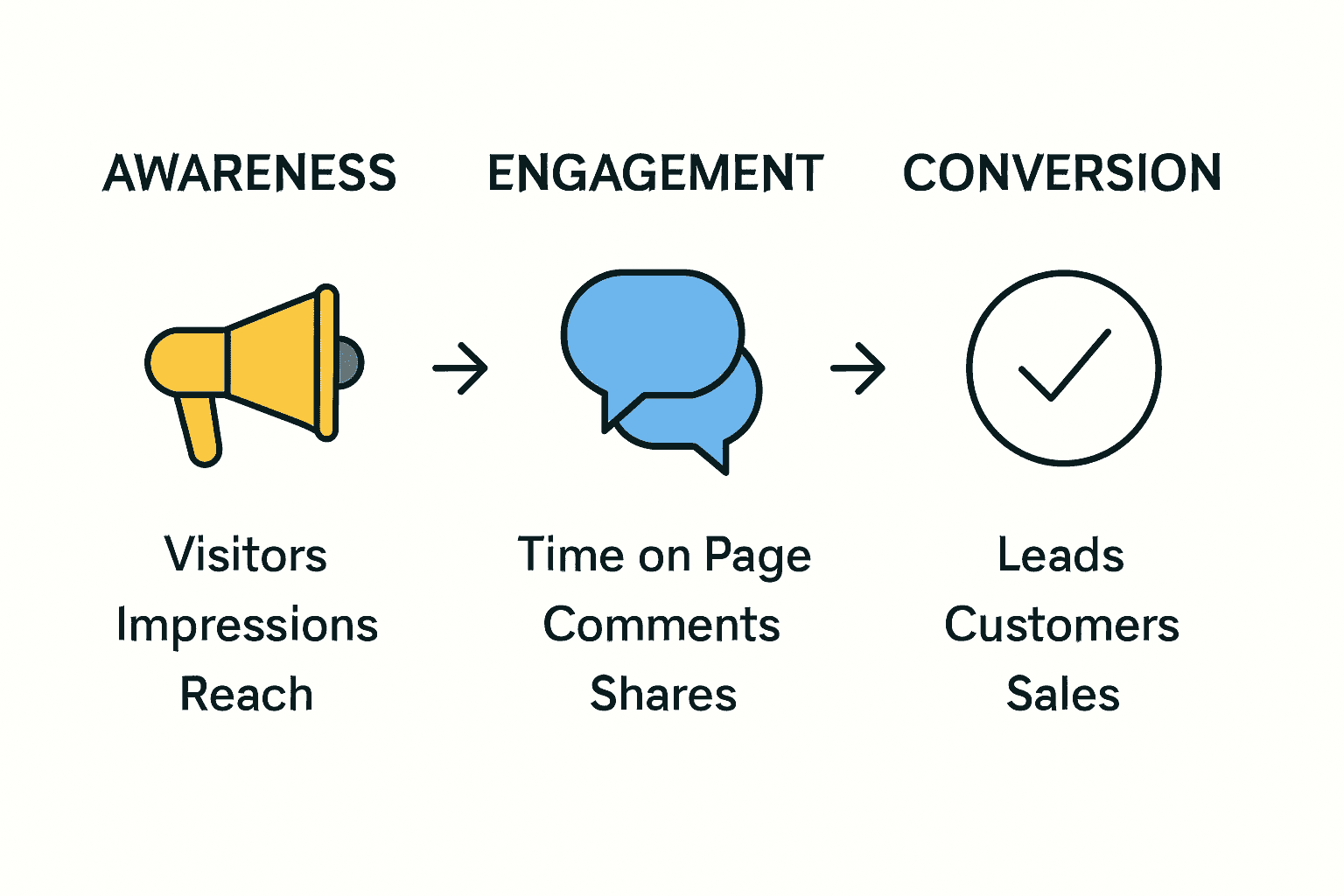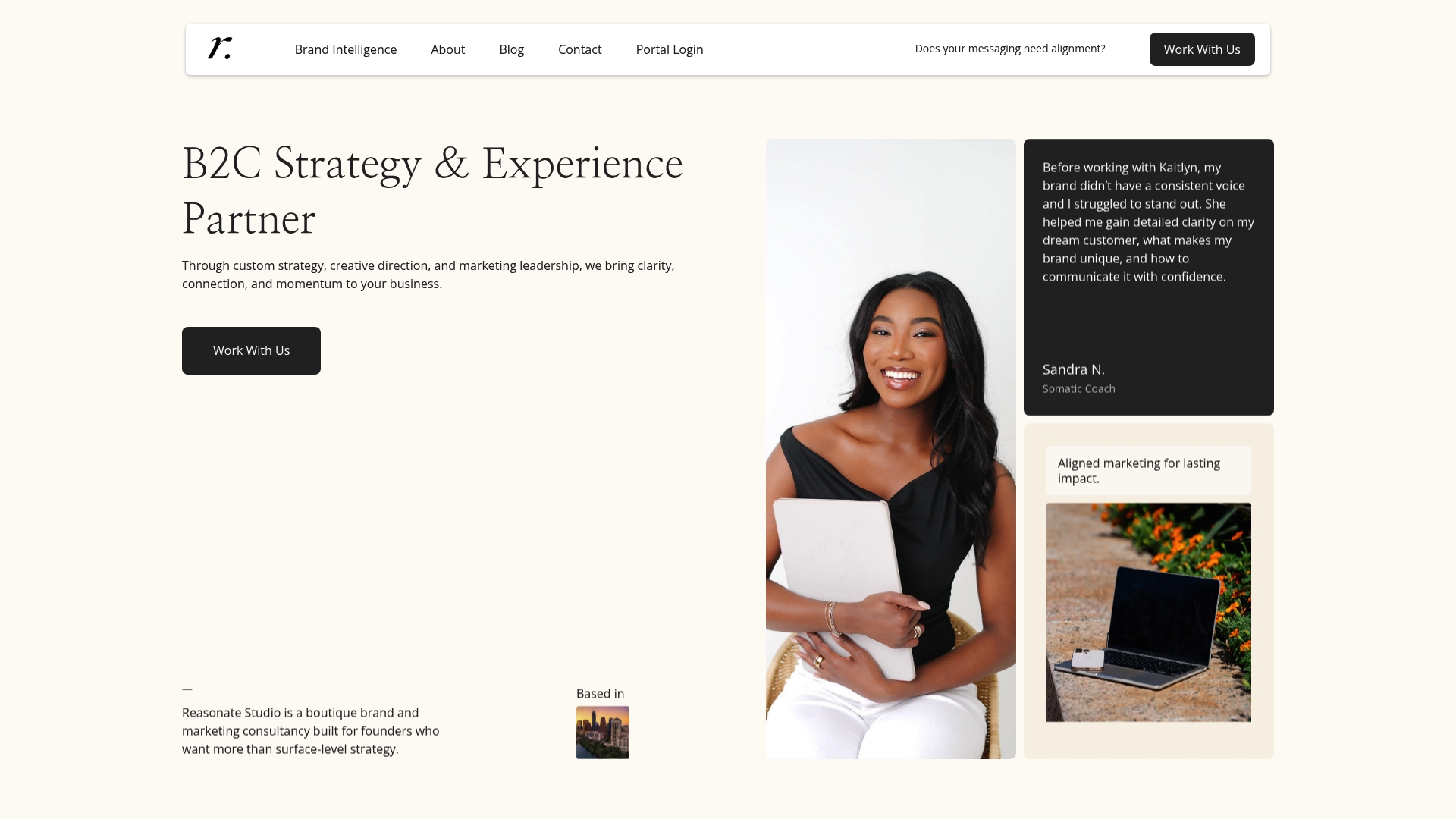Branding Strategies: Building Impactful Small Businesses

Learn how to develop a content strategy step by step—unlock clarity, align brand messaging, and drive long-term business growth with confidence.

Did you know that businesses with strong content strategies are up to 60 percent more effective at achieving their marketing goals? Building an intentional content plan can be the difference between random marketing and steady growth. Crafting a clear foundation, setting the right goals, and understanding your audience put you in control of your brand’s message and results.
Defining your brand foundation transforms scattered marketing efforts into a powerful strategic roadmap. This critical first step helps you understand who you are, what you stand for, and how you uniquely serve your audience.
Starting with brand clarity means getting crystal clear about three core elements: your brand values, target audience psychology, and core messaging. Think of these as the DNA that will guide every piece of content you create.
Begin by identifying your core brand values. Ask yourself: What principles define your business? What do you stand for beyond just making money? These values become the emotional anchor that connects you with your ideal customers. For example, if you value transparency and customer empowerment, your content should consistently reflect those commitments.
Next, develop deep understanding of your target audience. This goes far beyond basic demographics. You want to map their desires, challenges, aspirations, and psychological triggers. Create a detailed audience persona that captures not just who they are, but how they think and feel. What keeps them up at night? What dreams are they chasing?
Pro Tip: Your brand foundation is not a one-time exercise. Revisit and refine it annually as your business evolves.
Finally, craft a core messaging framework that articulates your unique value proposition. Distill what makes you different into clear, compelling language. This becomes the foundation for all your content storytelling moving forward.
By investing time in clarifying your brand foundation, you create a strategic compass that ensures every piece of content feels authentic, purposeful, and aligned with your business goals. Ready to bring this foundation to life? The next step will help you translate these insights into a dynamic content strategy.
Transforming your brand foundation into tangible marketing results starts with setting clear strategic content goals. This step is about converting your vision into measurable objectives that drive meaningful business growth.
The most effective approach is using SMART goals a framework that turns vague intentions into precise targets. SMART stands for Specific, Measurable, Actionable, Relevant, and Timely. Instead of saying “I want more website traffic,” you might set a goal like “Increase organic website traffic by 35% within six months by publishing two high quality blog posts weekly.”
Break down your content goals into three primary categories: awareness, engagement, and conversion.
Here’s a summary of each content goal category and example metrics:
| Goal Category | Focus Area | Example Metrics |
|---|---|---|
| Awareness | Expand reach | Website visitors Social followers |
| Engagement | Foster interaction | Time on page Comments Shares |
| Conversion | Drive desired action | Leads generated Sales Email sign-ups |

Start by analyzing your current performance. What content already works well? Where are the gaps? Use analytics tools to understand your baseline metrics before setting ambitious but achievable targets. If your blog currently attracts 1000 monthly visitors, a 35% increase would mean targeting 1350 visitors.
Pro Tip: Align your content goals directly with broader business objectives to ensure every piece of content serves a strategic purpose.
Consider both quantitative and qualitative goals. Quantitative goals are number driven like increasing email subscribers by 25%. Qualitative goals might include improving content quality perception or establishing thought leadership in your industry.
Remember that goals are not static. Plan to review and adjust your content strategy quarterly. This flexibility allows you to respond to changing market conditions and emerging opportunities. Your next step will be developing a content plan that systematically achieves these strategic goals.
Understanding your audience is more than demographic data. It means deeply comprehending their motivations, challenges, and content consumption patterns throughout their entire decision making journey. This step transforms your content strategy from generic broadcasting to precise targeted communication.
Start by creating comprehensive audience personas that go beyond basic demographics. Imagine each persona as a real person with specific goals, pain points, and information needs. What questions are they asking? What problems keep them up at night? Your personas should capture psychological insights as much as statistical information.
Break down the buyer journey into three critical stages: awareness, consideration, and decision. In the awareness stage, your audience is experiencing a challenge but might not know the solution. Content here should be educational and problem focused. During the consideration stage, they are exploring potential solutions. Here your content can compare approaches and demonstrate expertise. The decision stage is where you provide concrete reasons why your approach is the best solution.
For each persona and journey stage, map specific content types that will resonate. A professional seeking business growth might appreciate in depth guides during the awareness stage, comparison worksheets in the consideration stage, and detailed case studies when making a decision.
Pro Tip: Interview actual customers to validate your personas and journey mapping. Real customer insights are worth more than theoretical assumptions.
Track how different content performs across these personas and stages. Which pieces generate the most engagement? Where do potential customers drop off? Use these insights to continuously refine your content strategy, ensuring you are always meeting your audience exactly where they are.
By meticulously mapping audience needs and journeys, you create a dynamic content ecosystem that guides potential customers from initial curiosity to confident decision making. Your next step involves translating these insights into a tactical content plan that speaks directly to your audience.
A robust content framework transforms random content creation into a strategic powerhouse. This step is about creating a systematic approach that ensures your content remains purposeful, aligned, and sustainable across all channels.
Begin by establishing your core content pillars. These are 3 to 5 broad topics that reflect your brand expertise and audience interests. Think of content pillars as the foundational themes that will guide all your content creation. For a marketing consultancy, these might include strategic planning, brand positioning, and digital marketing tactics.
Next, develop a content governance process that outlines clear standards and workflows. This means creating guidelines for content quality, brand voice, visual style, and approval processes. Your governance document becomes the north star that keeps all content creators aligned. Include specifics like acceptable tone, formatting rules, and key messaging principles.
Create a comprehensive content calendar that maps out topics, formats, and publication schedules. This calendar should balance different content types across your personas and buyer journey stages. Mix educational blog posts, engaging social media content, in depth guides, and quick reference resources to maintain audience interest.
Pro Tip: Build flexibility into your content framework. Schedule 20% of your content calendar for timely or trending topics that allow real time engagement.
Establish a realistic publishing cadence that matches your team’s capacity. Consistency matters more than volume. If you can reliably produce two high quality blog posts and weekly social media content, that beats sporadic mass publishing. Track your team’s performance and adjust expectations based on actual output.
Implement a content review and optimization process. Regularly assess which pieces generate the most engagement, and use those insights to refine future content. Your framework should be a living document that evolves with your audience and business goals.

By designing a consistent content framework, you create a strategic engine that turns content from a random activity into a powerful business growth tool. Your next step involves bringing this framework to life through tactical content creation.
Turning your carefully crafted content strategy into reality requires a methodical approach to implementation and continuous refinement. This step is about bringing your content plan to life while building in mechanisms for ongoing optimization.
Start by selecting the right content management system that supports your workflow. Choose a platform that allows easy content creation, scheduling, collaboration, and performance tracking. Look for tools that integrate with your existing marketing technologies and provide robust analytics capabilities.
Begin implementation by creating a phased rollout approach. Do not attempt to execute your entire content plan simultaneously. Instead, prioritize content types and channels based on your audience personas and strategic goals. Start with your most critical content pillars and gradually expand your content ecosystem.
Establish a consistent content creation workflow that includes clear roles and responsibilities. Define who will research, write, edit, design, and approve content. Create templates and guidelines that ensure every piece of content maintains your brand voice and quality standards. Consider developing a content collaboration tool or shared document system that allows seamless communication among team members.
Pro Tip: Schedule regular content brainstorming sessions to generate fresh ideas and maintain creative momentum. Involve team members from different departments to bring diverse perspectives.
Implement a robust tracking and measurement system. Set up analytics to monitor key performance indicators like engagement rates, website traffic, conversion metrics, and audience growth. Use these insights to understand what content resonates and where improvements are needed.
Be prepared to iterate quickly. Content strategy is not a set it and forget it process. Plan quarterly content audits to review performance, identify top performing pieces, and explore opportunities for content repurposing. Sometimes a high performing blog post can become an email series, social media content, or even a webinar.
By implementing your content plan with intentionality and building in systems for ongoing testing and optimization, you transform your strategy from a static document into a dynamic growth engine. Your next step involves continuously evolving and adapting your approach based on real world performance data.
Continuous optimization transforms your content strategy from a static plan into a dynamic growth engine. This final step is about developing a systematic approach to measuring performance and making data driven improvements that compound over time.
Establish a comprehensive measurement framework that goes beyond surface level metrics. While website traffic and social media followers are important, dig deeper into metrics that truly reflect business impact. Focus on indicators like qualified lead generation, audience engagement depth, content conversion rates, and the actual revenue generated from your content efforts.
Create a monthly performance dashboard that tracks key performance indicators aligned with your original strategic goals. This dashboard should provide a holistic view of your content ecosystem. Include metrics like organic search rankings, average time on page, email list growth, webinar registrations, and direct revenue attributable to content marketing initiatives.
Implement a systematic quarterly review process. During these reviews, analyze not just the numbers but the stories behind them. Which content pieces resonated most with your target personas? What topics generated the most meaningful engagement? Look for patterns that reveal deeper insights about your audience and content effectiveness.
Pro Tip: Develop a content scoring system that evaluates pieces based on multiple dimensions beyond traditional metrics. Consider factors like audience sentiment, strategic alignment, and potential for repurposing.
Be prepared to make bold strategic shifts based on your findings. If certain content types or topics consistently underperform, do not hesitate to reallocate resources. Conversely, double down on content formats and themes that demonstrate consistent audience interest and business impact.
Remember that optimization is an ongoing journey. Your content strategy should be a living document that evolves with your business, audience needs, and market dynamics. By maintaining a disciplined approach to measurement and continuous improvement, you create a resilient content ecosystem that drives sustainable growth.
Many entrepreneurs struggle with unfocused marketing and one-off campaigns that fail to create lasting results. If you are tired of piecing together blog posts and social updates without a clear direction, you are not alone. The article above highlighted how important it is to clarify your brand foundation, set SMART goals, and build a content framework that actually moves your business forward. But making those steps work in practice often feels overwhelming. Gaps in messaging, inconsistent planning, and a lack of honest measurement can keep your momentum stuck.

Ready to stop guessing and start growing? At Reasonate Studio, we help founders like you create content strategies that are both strategic and sustainable. Using our proven Aligned Impact Model™ you will move confidently from strategy to real-world execution with support at every stage. Whether you are looking for DIY tools or want hands-on partnership, our approach is designed to build clarity, systems, and creative energy into your marketing. Do not wait to give your business the structured lift it needs. Explore how you can transform content from a marketing chore into your growth engine. Visit Reasonate Studio today and discover your next step toward sustainable success.
To clarify your brand foundation, define your core values, understand your target audience’s psychology, and craft a clear messaging framework. Start by asking what principles guide your business and create a detailed audience persona capturing their desires and challenges.
SMART goals, which stand for Specific, Measurable, Actionable, Relevant, and Timely, help to convert vague intentions into precise targets. For example, set a goal to “increase organic website traffic by 35% within six months” by specifying actionable steps like publishing two high-quality blog posts weekly.
To create audience personas, gather in-depth information about your audience’s motivations, challenges, and information needs. Interview actual customers to collect insights, then document each persona’s specific goals and pain points to ensure your content directly meets their needs.
Your content calendar should map out topics, content types, and publication schedules, ensuring a balance across different audience personas and buyer journey stages. Include a mixture of educational blog posts, social media content, in-depth guides, and timely trending topics, adjusting as needed based on performance.
To measure and optimize your content strategy, establish a comprehensive measurement framework that tracks key performance indicators like audience engagement and content conversion rates. Conduct regular quarterly reviews to analyze performance data and make data-driven adjustments, aiming for improved metrics like increasing lead generation by 25% over the next quarter.
Regularly review your content strategy to ensure alignment with your business goals. Set specific intervals for reassessing your content performance, such as quarterly or semi-annually, to adjust your goals and tactics based on evolving audience needs and market dynamics.